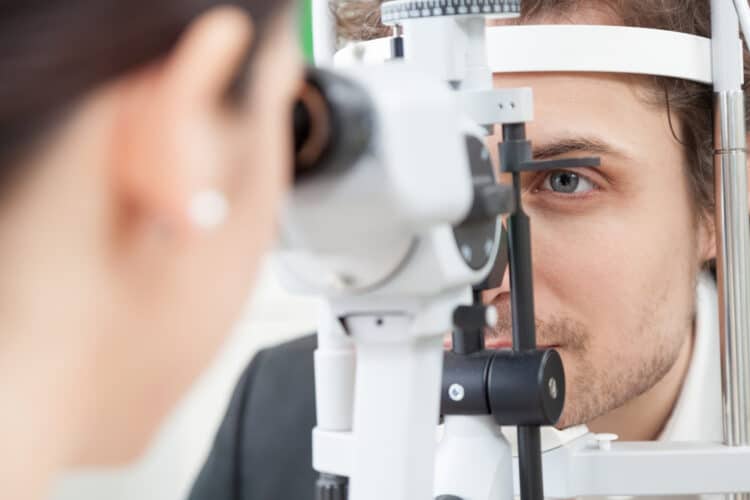Cornea

Pterygium Removal
The Midwest Eye Center offers complete Ptyergium removal using the latest technologies available. Pterygium is typically known as a triangular-shaped growth of the conjunctiva. Symptoms may include irritation, redness, and tearing. Tiny capillaries that supply blood to the eye tissue cultivate Pterygium growth. For some, the growth remains dormant; however, in other cases it grows over the central cornea and directly effects vision. If a pterygium fully develops, it may change the shape of the cornea, causing astigmatism. If the pterygium growth invades the central cornea, it is removed surgically.
Since pterygiums are most commonly caused by sun exposure, Midwest Eye Center recommends protecting the eyes from sun, dust and wind. Applying artificial tears liberally is also beneficial in decreasing irritation. In some cases, eye drops are prescribed to reduce inflammation.
Corneal Erosions
Recurrent breakdown of the corneal epithelium, typically caused by a previous corneal abrasion or by map-dot-fingerprint dystrophy. Symptoms include blurred vision, foreign body sensation and eye pain or discomfort.
Corneal erosion affects the cornea, the clear dome covering the front of the eye. The cornea is composed of five layers. The outermost layer is the epithelium. When the epithelium does not stay attached correctly to the corneal tissue below, including the layer called the Bowman’s layer or the basement membrane, this can cause a condition called corneal erosion. If the problem occurs repeatedly, it is called recurrent corneal erosion.
Corneal Erosion Symptoms
The most common symptom of corneal erosion is mild to severe pain. The pain may be particularly uncomfortable in the morning upon awakening because the eyes naturally get dry at night, and the eyelid can stick slightly to the epithelium. If the epithelium is not firmly attached, sometimes opening the lids can cause the epithelium to tear off. Without treatment, your eyes may continue to experience this erosion.
Other symptoms include:
- Feeling of something in the eye
- Light sensitivity
- Blurred vision
- Watery eyes (particularly on awakening)
- Dryness
Who Is At Risk for Corneal Erosion?
Corneal erosion can occur spontaneously and happen to anyone. Certain factors increase your risk for corneal erosion:
- Having a history of eye injury
- Having a corneal disease, such as corneal dystrophy
- Having had an eye ulcer, such as from a herpes simplex infection
- Wearing contact lenses including lenses that are improperly fitted or not properly cared for
Corneal Erosion Diagnosis
If your ophthalmologist thinks you have corneal erosion, he or she will conduct an examination with a slit lamp, an instrument that shines a thin, bright sheet of light into your eye. This allows your ophthalmologist to examine the front portion of your eye thoroughly. Your ophthalmologist may also put fluorescein stain, a yellow dye, in your eye to reveal areas of the cornea experiencing erosion.
Corneal Erosion Treatment
Your ophthalmologist may advise using a lubricating ointment at bedtime to prevent the eyelid from sticking to the epithelium. Artificial tears may also be recommended during the day to keep your eyes moist. Your eye may be patched or you may be fitted with a special type of contact lens that acts as a bandage for your eye. You may also be given antibiotics for a few days until the epithelium has healed.
If corneal erosions continue to recur despite nighttime lubrication and use of artificial tears during the day, and the patient is still getting recurrent erosions, your ophthalmologist may recommend surgery to promote healing of the epithelium. One type of surgery, called anterior stromal puncture, works by creating tiny scars just at the base of the epithelium with a very fine needle. This scarring is believed to act as an anchor for the epithelium to adhere better to the corneal layer beneath it.
